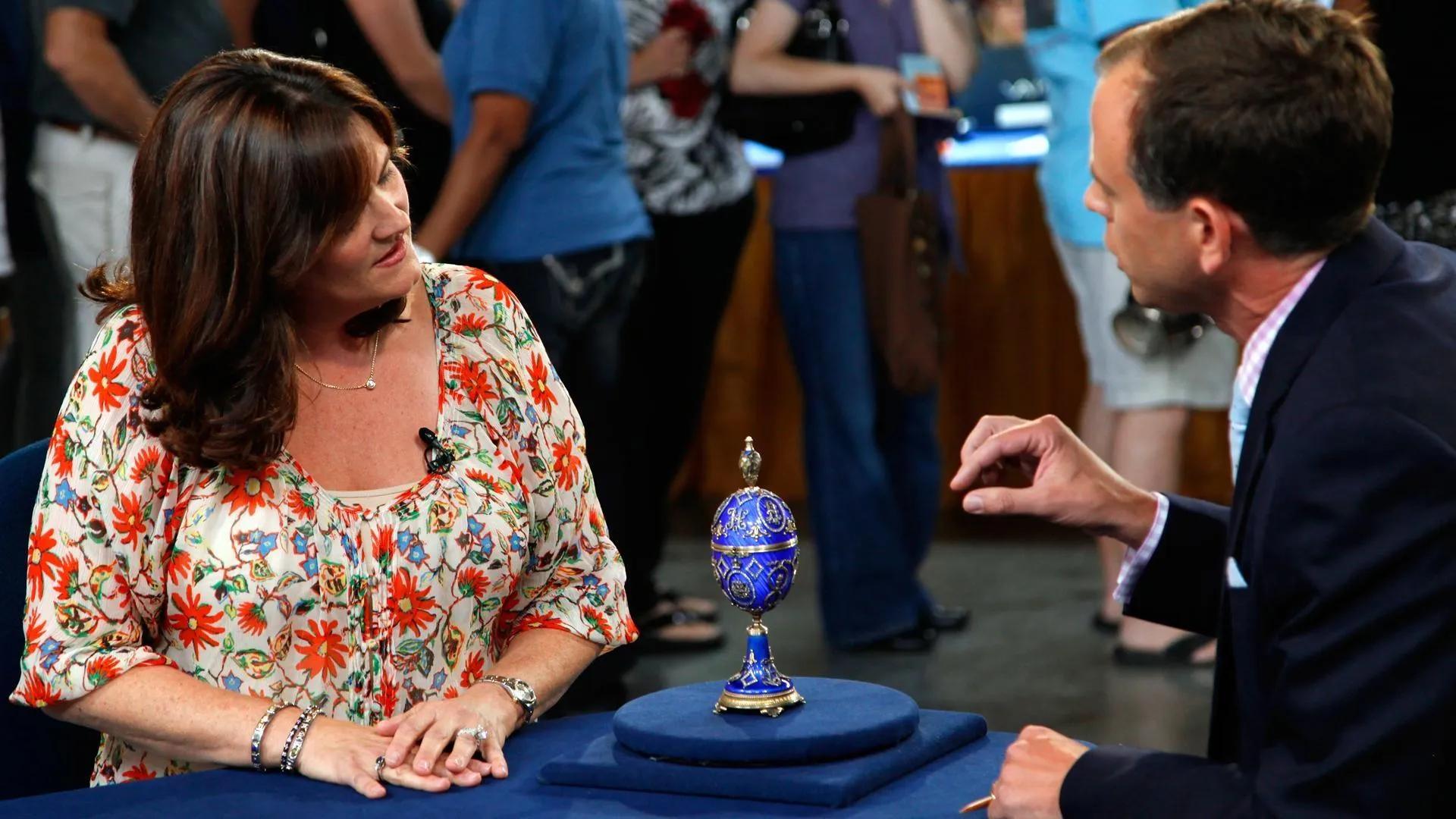GUEST: My mother married into a family in Atlanta that was very familiar with antiques, and my grandmother gave these to my mother when she married, welcoming her into our family.
APPRAISER: And do you know where she got them? Did she get them here?
GUEST: From an antique dealer here in Atlanta.
APPRAISER: Okay. That would have been when?
GUEST: I think it was 1940.
APPRAISER: Let's turn one over and take a look. There's a mark on the bottom. They both have the same mark, this blue J.P. mark, and it's a mark that's quite common on porcelain like this. It's the mark of a Paris porcelain maker called Jacob Petit. And Jacob Petit began operations just outside Paris in the 1830s and was active until the third quarter of the 19th century. He made a lot of porcelain. It was very popular in England-- a lot of it was exported there-- and it was also popular here. These to me have a sort of southern American taste to them, with this sort of palmette on the top especially. But you know, I wouldn't be surprised if they came from England to that antiques dealer in 1940. They could also possibly have been in the southern states since before the Civil War. But I think they were made about 1850 at the sort of high point of Jacob Petit's output. Very ornamental, large and impressive, which is what he liked to do, one reason they were popular down here. The quality of the work is good. The figures are very well modeled. These are all painted by hand, and nicely done-- the little floral painting. And the gilding is great and in great shape. Mostly these things are heavily damaged and restored. There's a little bit of work on these, but it's minimal. I suspect if they were in an antique shop today, I think they'd be priced at least $3,500.
GUEST: Ooh. Ooh!
APPRAISER: And it's possible they'd be priced at $4,000 or $4,500.
GUEST: Wow. Well, now I'm going to give them to my daughter.
APPRAISER: Okay. (laughs)











